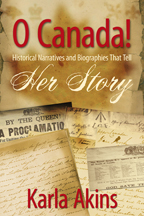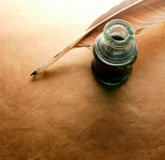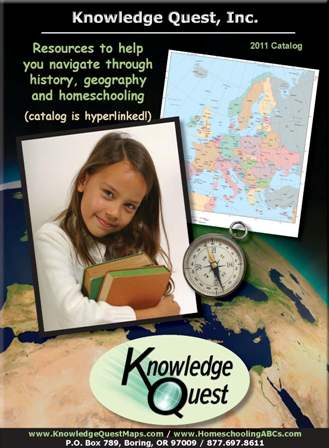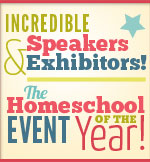|
January, 2006 - by Terri Johnson, author of
Homeschooling ABCs (www.homeschoolingabcs.com
) -
dedicated to helping new homeschoolers gain the
confidence and the necessary skills to successfully teach
their children at home.
To Notebook, Lapbook or Scrapbook
That is the Question!
Indeed, the holidays are over and now is the time to get back
to normal schedules, schoolwork and activities. Some of you may
use a gentle approach, easing your way into the normal routine.
Others of you may jump in with gusto, feeling as though much
time has been lost over the past month. I tend to jump back
into the school routine with both feet on January 3rd, dragging
my children with me. I must remind myself that no time has been
lost - the children have learned, although not from a textbook.
They have learned about family, traditions, and relationships.
They have learned what it means to love and to give and to
accept in return. They have learned patience and gratefulness.
Let us not forget the lessons of December because of the rigors
of January. Slow down, take time and enjoy the homeschooling
journey together. Perhaps the following article will give you
some ideas for capturing and remembering these fleeting
childhood days.
Take a moment and think about all the school work and projects
that you have completed with your children over this past year.
. . in fact, over all the years that you have educated your
children at home. Now think about how that work has been
documented or displayed. If you are like me, you probably have
a box or two of filled-in workbooks.
There may be some satisfaction in a stack of completed
workbooks, but apparently not too much, for when Grandma and
Grandpa come for a visit to our house, it is not the workbooks
that the kids dig out to show their accomplishments; it is
their journals and notebooks, lapbooks and projects. These are
the “books” that the children take pride in.
Making books with children is an effective way to cement and
document their learning. It also becomes an effortless review
tool. Your children will want to go back and look through their
books–by themselves, with each other, and, of course, with
their favorite relatives. They will read again their entries,
reinforcing this knowledge and shifting it into permanent
storage banks in their brains. These facts will make it past
the short term memory centers. In fact, this learning technique
holds a great advantage over fill-in-the-blank workbooks for
long-term learning and information retrieval.
Home-made educational books fall into four basic
categories–journal, notebook, lapbook and scrapbook. There are
distinctions with each type, but there is some overlap between
them as well. Any of these books can be made on a shoe-string
budget, or they can be made quite expensively. They can be
elaborate in their design or very simple. The key is that you
stay within your budget and that you use your creativity and
that of your children.
Let’s look at a description of each type of book, what subjects
it is ideally suited for, and a list of recommended materials
to get started.
Journal
A journal holds the compilation of a child’s thoughts,
reflections or research on a given subject. It is usually a
blank book or spiral bound book that contains either lined or
unlined paper. Generally, the child starts on page one and
works his way through the book until the subject has been
exhausted or he is ready to start on a new journal.
A journal is ideally suited for:
· Prayer journal
· Bible study notes
· Daily journal of meditations
· Vocabulary / Spelling words and definitions
· Nature study
· Scientific research
We have used journals throughout our home education process. We
have used them most often for nature study, using Charlotte
Mason techniques and suggestions. Some good books and articles
for learning more about journaling in your homeschool would
be:
Homeschooling for Excellence by David and Micki Colfax
A Charlotte Mason Companion by Karen Andreola
A Pocketful of Pinecones by Karen Andreola
www.homeeducator.com/FamilyTimes/articles/8-1article9.htm
List of materials to get started:
· A blank book or spiral bound notebook
· Writing tools (colored pencils, pens)
Notebook
A notebook is a collection of loose sheets containing various
types of information assembled together to form a cohesive
“story”. Generally, these are 3 ring notebooks with divider
tabs to sort the subject matter that has been placed into it. A
notebook can be filled with drawings, narrations, maps, reports, lists, timelines, etc.
A notebook is ideally suited for:
· Chronological history study
· Language Arts
· Science study / experiments
· Timeline of events
We have assembled many notebooks over our seven years of home
education. Our history notebooks are by far our favorites to
browse through. The children have included their drawings,
maps, narrations,
and book reports into these simple and get cherished binders.
We have used view binders so that they can insert a cover sheet
into the front under the clear plastic overlay. Some good books
and articles to read on the subject of notebooking include:
The Well-Trained Mind by Jessie Wise and Susan Wise Bauer
www.homeeducator.com/FamilyTimes/articles/8-1article9.htm
www.homeschoolinformation.com/articles/portfolios.htm
List of materials to get started:
· 3 ring binder
· notebook paper
· plain paper
· hole punch
· sheet protectors
· divider tabs
· stickers and art supplies
Lapbook
A lapbook, also known as a shutterbook, is a file folder which
has been opened onto a flat surface. The two tabs are then
folded into the center where they meet and form a window
shutter effect. The concept is that mini books are attached to
the inside holding various information which your child has
collected and learned. A lapbook can contain games, vocabulary
words, pictures, maps, recipes and
clipart. You are
limited only by your imagination. This is an excellent
hands-on project for younger children.
A lapbook is ideally suited for:
· Unit Studies
· Literature or book
studies
· Science projects
· Math games
The term lapbook is relatively new (“Lap Book” trademarked by
Tobin’s Lab), but as I look back I realize that we have been
doing similar projects for many years. We did many unit studies
in the beginning and recorded much of the information that we
studied in file-folder books. We also created several math
games that used a file folder as the game board. I recently
reintroduced this concept to my children because it had been a
while since we had produced something like this and they loved
it! They put together a Viking lapbook which contained
drawings, maps,
book reports, vocabulary words, and a recipe for Viking bread
(which, of course, they made!). Here are some good articles,
books and websites to visit to get more information on putting
together your own lapbooks:
www.tobinslab.com
www.geocities.com/gibsevengang/lapbooks.html
http://Portfolder.com
www.scrapbookingtolearn.com.
Big Book of Books by Dinah Zike
Creating Books with Children by Valerie Bendt
List of materials to get started:
· Folders (regular or legal size)
· Writing tools
· Variety of paper (colored, index cards, etc)
· Glue / glue stick
· Stickers / rubber stamps
· Clipart
Scrapbook
Scrapbooking has become a very popular hobby in recent years.
There are scrapbooking stores, books and magazines popping up
everywhere. Most people consider scrapbooking as mom’s creative
outlet, but it can also be a wonderful educational tool. These
are generally created in a pre-made scrapbook album which you
can find at any arts and crafts or scrapbook store in your
area.
A scrapbook is ideally suited for:
· An alphabet or number book (preschoolers)
· Current events
· Family tree
· Field trips
· Science experiments
· School related photos
· History timeline
Older students, in particular, may get greatly excited about
documenting their school work in a scrapbook format. This is a
fun and sociable activity when all the supplies are pulled out
and your children get to use their creativity. Here are a
couple good articles to get you started. But be careful, you
might get hooked!
www.greenepa.net/~artwhiz/newsletter14.htm
www.homeschoolinformation.com/articles/portfolios.htm
List of materials to get started:
· Scrapbook album
· Acid-free paper
· Card stock
· Glue / glue sticks
· Gel pens
· Scissors
· Stickers / Rubber stamps
· Pressed flowers
Creating books with children is an enjoyable process and gives
everyone involved a sense of accomplishment. These are memory
building activities and good motivators as well. My children
are much more receptive and even enthused to complete their
project or paper when they know that it is going into the
notebook, lapbook or scrapbook. Their work is usually done more
neatly as well. And for what more can a homeschooling mom
ask?
Enjoy those learning moments!
Terri Johnson
Terri Johnson, along with her husband Todd, has been
teaching their children at home for 11 years. They also
run a publishing company - Knowledge Quest, Inc. - producing
history and geography materials for the homeschool
marketplace. This past year, they have started two online
classes - Homeschooling ABCs (
www.homeschoolingabcs.com) - dedicated to
helping new homeschoolers gain the confidence and the necessary
skills to successfully teach their children at home; and Upper
Level Homeschool (www.upperlevelhomeschool.com) –
encouraging and equipping homeschooling parents to stay the
course even when their teen enter high school and to finish the
race strong.
|








